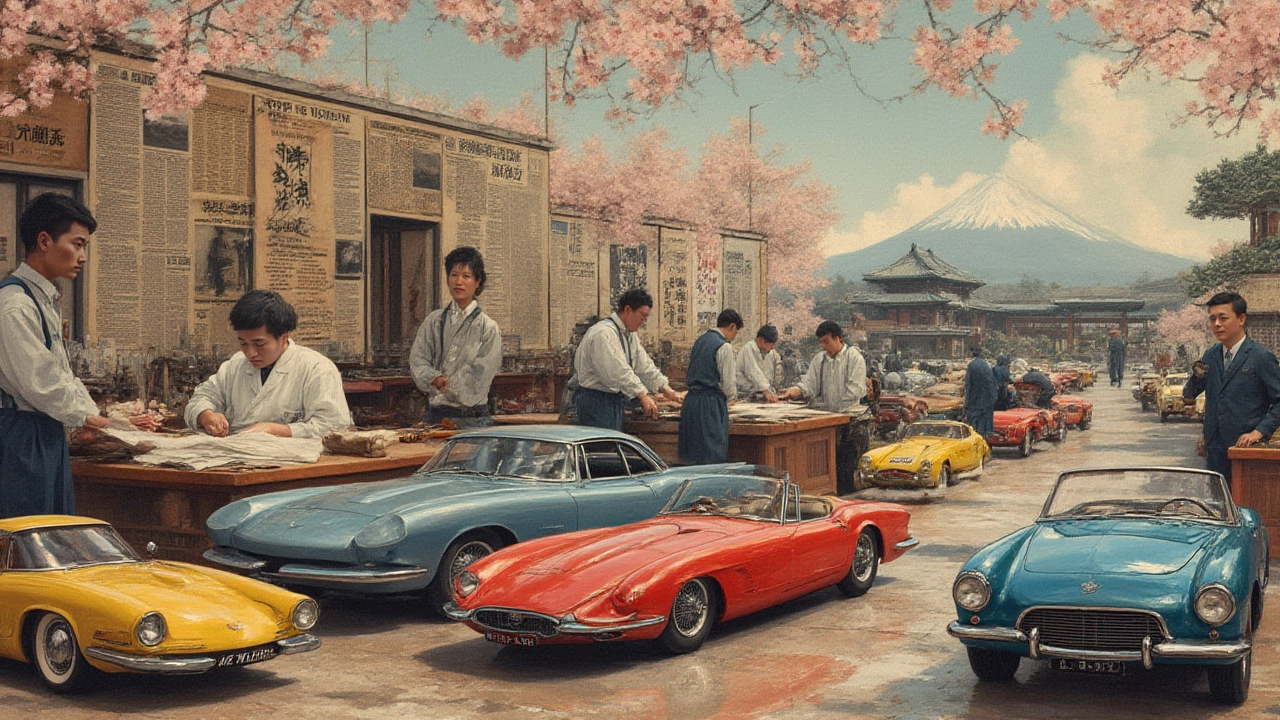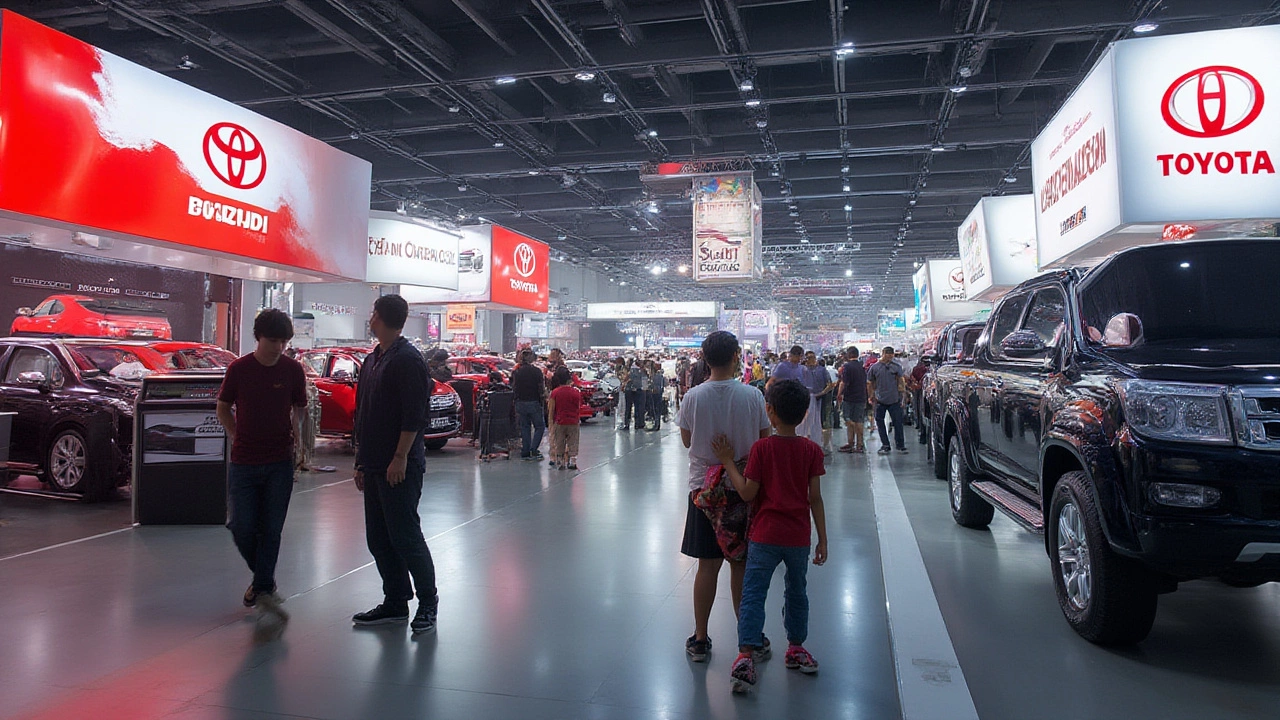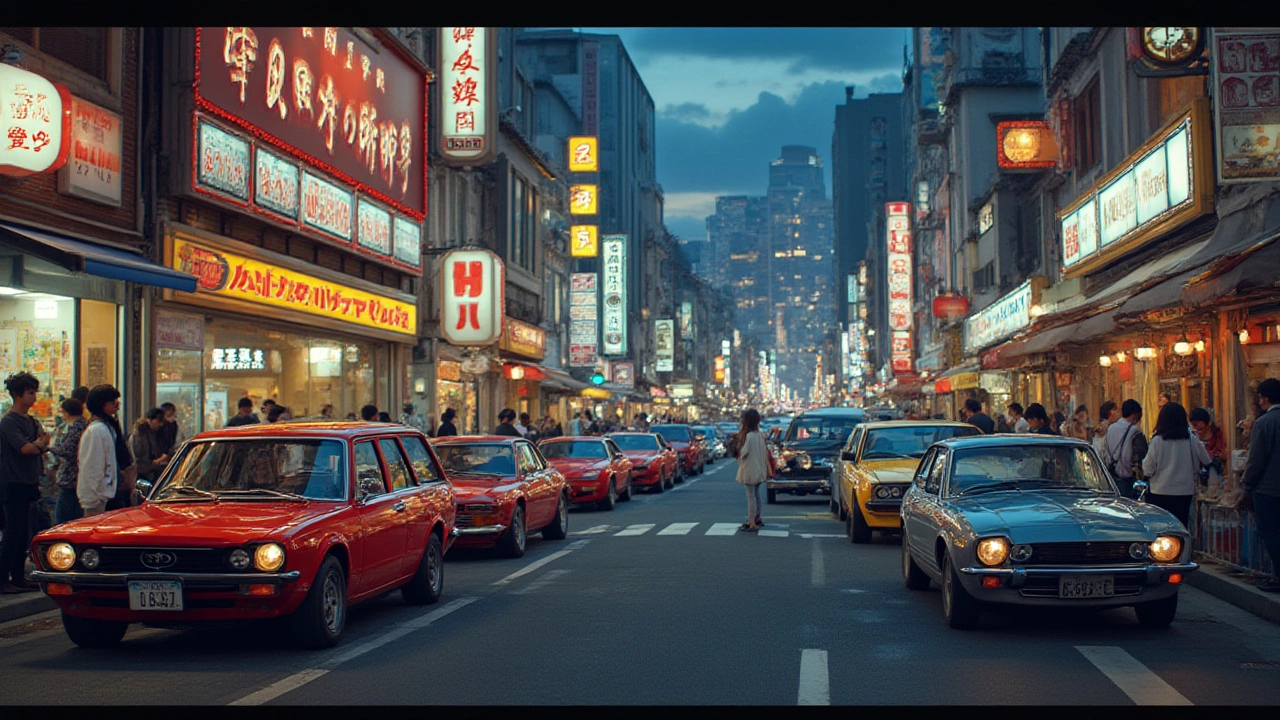Ever wonder why so many cars zipping around city streets have Japanese names stamped on the back? Japan’s impact on the auto world is nothing short of massive—and for good reason. We're not just talking about quirky, boxy vans or pocket-sized city cars. Some of the most reliable, innovative, and recognizable vehicles on planet Earth roll out of Japanese factories. So, where did all this car-making genius come from, and which brands can you thank for shaping your daily commute?
How Japan Became a Car Powerhouse
The story really gets rolling after World War II, when Japan found itself in need of rebuilding. Factories that once made wartime equipment pivoted to making peacetime goods—cars among them. But in the early days, Japanese cars were cheap, tiny, and viewed by the West as copycats. That all changed by the 1970s and 80s, when the oil crisis made fuel-efficient Japanese vehicles suddenly irresistible. Gas-guzzling American cars couldn’t keep up with zippy Japanese sedans like the Toyota Corolla or the Honda Civic. The world noticed that ‘Made in Japan’ now meant reliability and value for money.
Japan’s automakers took a different approach from their Western rivals. They obsessed over quality, deploying principles like "kaizen," which means constant improvement. Workers checked, rechecked, and tweaked production lines, making sure every car rolling off the line met a gold standard for durability. And Japanese automakers didn’t just rest on their laurels—the country’s engineers love a challenge. Hybrid technology? Japan led that charge, with Toyota launching the Prius long before ‘green’ was cool.
Die-hard car lovers know that Japanese brands aren’t just about being sensible. Legendary cars like the Nissan Skyline GT-R, Toyota Supra, and Mazda RX-7 created new chapters in the story of performance and speed. Meanwhile, brands like Subaru started winning world rally championships, showing off their turbocharged engines and all-wheel drive systems. By the late 20th century, Japan had morphed into an absolute titan in automotive manufacturing. In fact, by 2024, Japan remains one of the top three car-producing countries globally, pumping out over 7 million vehicles every year.
For context, here’s a quick look at the country’s car production stats:
| Year | Japan Car Production (Millions) |
|---|---|
| 1990 | 13.5 |
| 2000 | 10.1 |
| 2010 | 8.3 |
| 2020 | 8.06 |
| 2023 | 7.8 |
The Most Famous Japanese Car Brands
It's impossible to talk about Japanese cars without shining a light on the big names. Everyone recognizes Toyota, Honda, and Nissan because they're everywhere—and for good reason. Toyota is the largest automaker in the world by sales volume, pumping out everything from the rugged Land Cruiser to the crowd-pleasing Camry. Toyota isn’t afraid of reinvention, either. The company is a pioneer of hybrid tech and has gone all-in on hydrogen fuel cells.
Honda punches above its weight. Civic and Accord? Sure, but also motorcycles, airplanes, and lawnmowers. Honda’s racing pedigree is legendary, and their engines are practically bulletproof—a favorite of tuners and car enthusiasts. Meanwhile, Nissan keeps finding ways to make cars that get people talking, with the iconic GT-R being every weekend racer’s dream.
Then there’s Mazda, the brand that put “zoom-zoom” in car commercials and rotary engines on the map. Their MX-5 Miata is a top pick for driving purists looking for a lightweight convertible. Subaru, beloved by outdoor lovers and rally fans, built its rep on all-wheel drive everything, making sure every trip to the ski slopes or muddy campsite ends without drama.
Don’t forget Mitsubishi, which balances SUVs like the Outlander with performance legends like the Lancer Evolution. Suzuki is king of the kei car (tiny, fuel-sipping rides perfect for Japan’s busy cities), while Isuzu and Daihatsu focus more on rugged trucks and practical vehicles, some of which have an almost cult status for their reliability.
Want a quick cheat sheet? Here’s a handy list of the biggest Japanese car brands, some of which may surprise you:
- Toyota
- Honda
- Nissan
- Mazda
- Subaru
- Mitsubishi
- Suzuki
- Lexus (Toyota’s luxury arm)
- Infiniti (Nissan’s luxury arm)
- Daihatsu
- Isuzu
- Acura (Honda’s U.S. luxury brand)
Ever heard of Mitsuoka? Probably not, unless you’re deep in car culture. It’s a brand known for making wild, retro-styled cars with modern bones. Japan’s car industry is never boring.

What Makes Japanese Cars Stand Out?
If you’ve ever driven a Japanese car, you’ve probably noticed the little things—a switch that never breaks, a door that never squeaks, an engine that fires up even on the coldest days. Japanese brands are obsessed with fine details and reliability. The nonprofit Consumer Reports regularly ranks brands like Lexus, Toyota, and Mazda at the top for reliability. Check the parking lot at any grocery store and you’ll spot Camrys and Civics with 200,000 miles chugging along as if they’re just out of the showroom.
But it’s not just nuts and bolts. Japanese automakers also lead the game with innovations. Toyota’s commitment to hybrids changed the world, with over 15 million Prius cars sold since the late 1990s. Subaru’s boxer engine and symmetrical all-wheel-drive system are unique, and Mazda’s rotary engine, although quirky and a bit thirsty, is the stuff of legends with fans still tuning old RX-7s for track days.
Want to know a cool trick? Japanese brands have distinct signatures. Pop a hood and check the engine layout, or listen to the way a Honda VTEC engine screams at high revs—it’s unmistakable. Even the smallest details, from Toyota’s bulletproof transmission designs to Nissan’s willingness to push the envelope with the GT-R’s cutting-edge tech, give each marque its own flavor.
Japanese cars have another ace up their sleeve: global reach. Car buyers in every part of the world trust Japanese brands. Maybe it’s because Japanese automakers are obsessed with adjusting their cars depending on where they’ll be sold. Corollas for the Middle East get beefier cooling systems for desert driving, while cars destined for Europe offer more compact diesel options. This attention to local needs is a huge part of their global success.
Looking for a smart-buy tip? If you value resale value down the road, you can’t go wrong with Toyota and Honda. They hold their value longer than most rivals. And if you’re all about safety, Subaru, with its EyeSight system (driver-assist tech), regularly wins crash-test awards in the U.S. and Japan.
Iconic Models That Changed the Game
Now, talking brands is great, but autos fans love to geek out over the models themselves. The Toyota Corolla is the world’s best-selling car, period, with over 50 million sold since it debuted in 1966. It’s not flashy, but it gets the job done—every day, year after year. Honda’s Civic is almost as iconic; drivers love upgrading and customizing them, so there are car meets dedicated solely to Civics in nearly every big city.
The Nissan GT-R deserves a special mention. Nicknamed "Godzilla," this beast is a fixture in racing games and manga comics, and its twin-turbo V6 eats exotic supercars for breakfast. The Mazda MX-5 Miata is the go-to for anyone looking for pure driving joy in the form of a lightweight, perfectly balanced roadster. Subaru’s WRX and Forester are favorites for anyone needing fast fun off the beaten path, thanks to their turbo engines and all-wheel drive.
Some models even shaped entire car scenes. The Toyota Supra, with its 2JZ engine, became a legend after starring in movies like "The Fast and the Furious"—suddenly, people everywhere wanted to tune Japanese cars for more power. The Mitsubishi Lancer Evolution was the weapon of choice in rally championships and inspired a generation of performance lovers with its turbocharged punch and razor-sharp handling.
If you’re more about practicality or budget, Suzuki’s Swift is a small hatch that’s hard to kill, loved by city dwellers in India and Europe. Daihatsu’s Mira, a kei car in Japan, is a supermini that defines the art of tight parking. From the legendary to the loveable, Japanese brands have filled nearly every available niche—sports, luxury, economy, and everything in between.

Japanese Brands in the Modern Age: Innovations and Challenges
Fast forward to 2025, and Japanese automakers remain technical trailblazers, but the road isn’t without new challenges. Tesla and Chinese manufacturers are fighting for top spot in electric cars, but Toyota and Nissan are speeding up their own EV plans. Toyota has launched the solid-state battery Corolla, promising faster charging and double the range. Nissan is dropping more Leafs on roads. Honda, once focused mostly on hybrids, has just revealed its first all-electric SUV, the Prologue.
Sustainability is king now, and Japan’s carmakers are experimenting with hydrogen, hybrids, plug-ins, and biofuels. Mazda’s return to the rotary, now as a range-extender for EVs, proves the old dog still has exciting new tricks. Regulations worldwide are tightening, with bans on internal combustion looming in Europe and North America by the early 2030s, so Japanese brands have shifted R&D into high gear.
What about self-driving tech? Honda’s Sensing and Nissan’s ProPilot systems offer hands-off driving—at least on highways. Toyota’s Guardian AI focuses on safety over full autonomy, reflecting the brand’s "safety first" philosophy. Remarkably, all these carmakers export innovation along with vehicles. Factories in Texas, the UK, and Thailand build Japanese cars tailored for local tastes. No brand wants to be left behind as automotive tech changes fast.
Still, challenges remain. Competition from South Korea’s Hyundai and Kia, and China’s rapid-fire EV makers, keeps Japanese engineers on their toes. Yet, Japanese car brands’ biggest advantage—their reputation for long-term reliability—shouldn’t be underestimated. When buying a new or used car, that peace of mind built over decades is hard to put a price on.
So next time you hop into your trusty Toyota, nimble Mazda, rugged Subaru, or speedy Nissan, remember you’re driving a slice of history—one that’s always moving forward, but never afraid to learn from the past.






